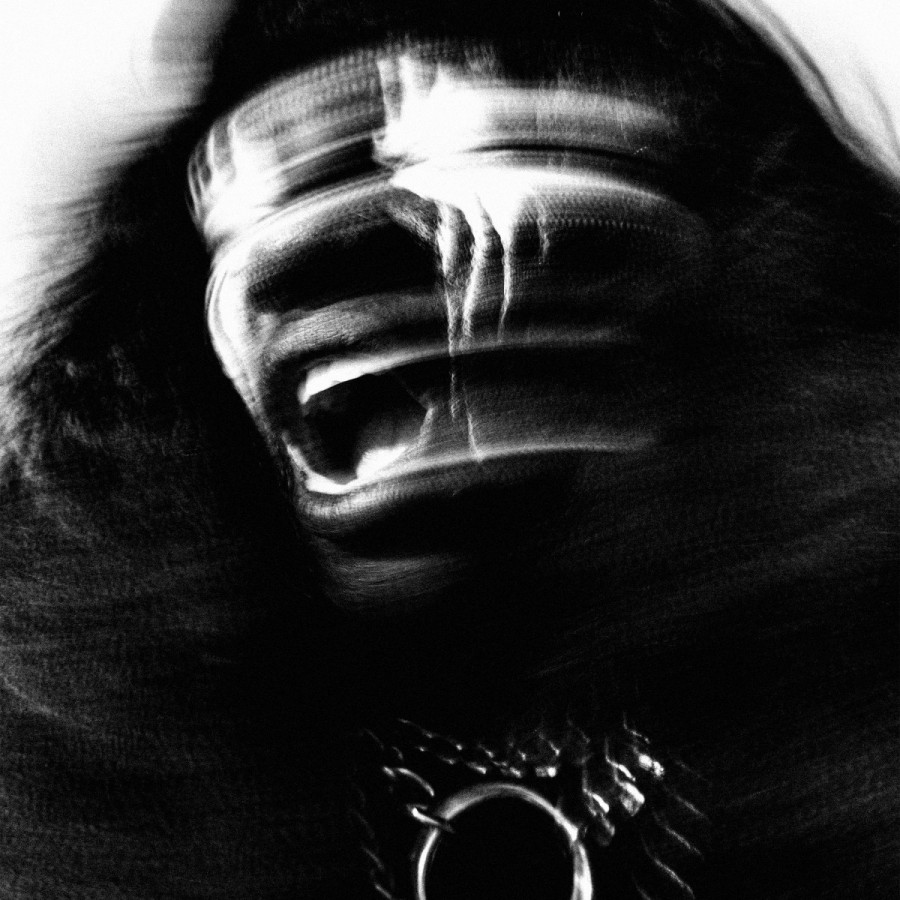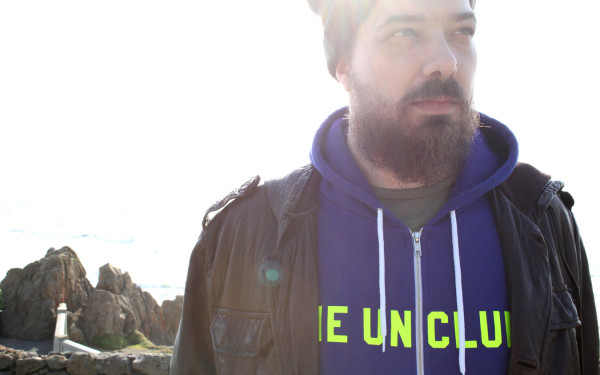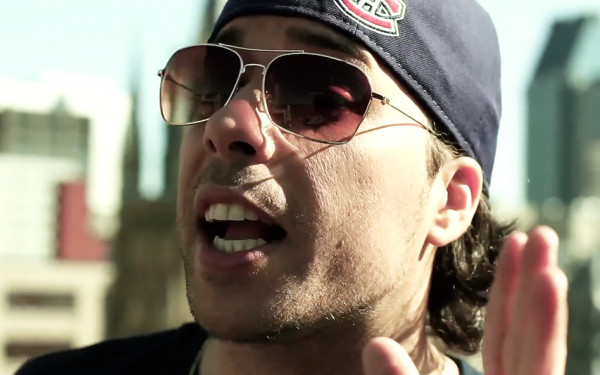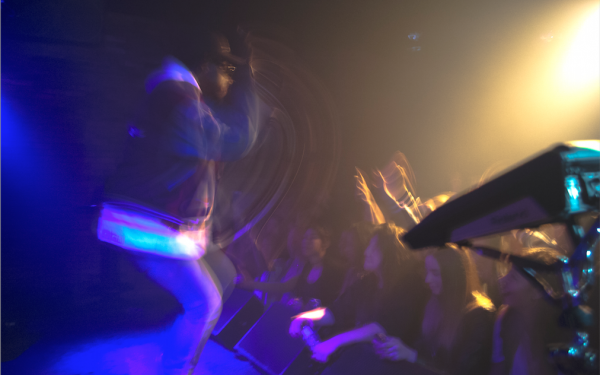Backxwash’s new album leaves no room for redemption
Montreal rapper isn’t afraid of the dark in ‘I Lie Here Buried With My Rings and My Dresses’
A year after releasing her sophomore album God Has Nothing To Do With It, Leave Him Out of It, Montreal rapper Backxwash is back with a vengeance.
Ashanti Mutinta’s second album showed her finding her footing both musically and lyrically, and it earned her the coveted Polaris Prize award in 2020. I Lie Here Buried With My Rings and My Dresses, out June 20, is more sonically ambitious than its predecessor and raises hell with no relief.
The album is harsh, unsettling, and tackles some of Muntinta’s darkest moments. She spits lyrics addressing addiction, mental health, gender and sexuality, the intersections of racism and transphobia, and religion over harsh industrial beats and wailing guitars (and cats). Mutinta doesn’t shy away from the dark, creating a lyrically graphic record that is both bleak and vulnerable.
The rapper explored forgiveness on her own terms in her previous album, but this one explodes with rage and pain—retaining full intensity for its 33 minute course. Like previous albums Deviancy and GHNTDWI, Backxwash continues her journey into horrorcore with aesthetics that conjure demons, devils, and witchcraft. Being born and raised in a heavily religious environment in Zambia before coming to Canada, themes of religion are also intertwined with those of colonization and trauma. Her music is partially inspired by horror movies, with “God has nothing to do with it, leave Him out of it,” being a line from Spanish horror flick Veronica, while I Lie Here Buried brings Blair Witch and Lynchian vibes.
The album opens with a speech about the purpose of pain, setting the tone for the album. This is immediately followed by one of the most graphic tracks of Backxwash’s discography, “Wail of the Banshee,” and doesn’t give you space to breathe before Rook’s guitars and black metal screams shake you in the title track. “Terror Packets” ends with a famous Angela Davis speech on violence, and clipping.’s production stands out in “Blood In The Water”. The album ends with “Burn To Ashes,” a fitting title for an album that explosive.

Mutinta has had issues with sampling in the past, it's the reason her award-winning album was taken off streaming platforms. I Lie Here Buried... has a lot less of them. The major samples are field recordings on “666 In Luxaxa” and the Godspeed sample on “Burn To Ashes”. Other interesting sounds include a screaming cat, chopped up guitars sent from Rook’s practice tapes, and programmed virtual instruments.
Along with long-time collaborators, I Lie Here Buried... includes standout features like Lauren Bousfield, Censored Dialogue, Sad13, clipping., Code Orange, and Surgeryhead.
As Backxwash finds her rightful place in experimental hip hop, some would try to compare her to inspirations JPEGMAFIA, Danny Brown, or clipping. (who are featured on the album), but Mutinta is in a league of her own. With compelling samples, an exciting roster of features, and Mutinta one-upping her production skills, I Lie Here Buried With My Dresses and My Rings is an album you don’t want to miss.
The Link sat down with Mutinta to talk about how the album was created, her favourite horror movies, and what’s next for Backxwash.
Q: What was the process of creating the album like?
A: I was playing around with concepts in general, and GHNTDWI ended with Redemption so people kept asking me if the next one was going to be a brighter album—a more positive album—and you know, there is space for art that is not positive all the time, I find. The next step was to make something that is bleak and has no redeeming qualities to it at all. When I went back to some of the darkest moments of my life, the lyrics just started coming out in the way they did and it felt right to make such a thing.
Q: You called this album your Yeezus and I see why. Do you wanna expand on that?
A: The frequencies that I use in it are very harsh on the ears. I would call it my Yeezus from a sonic perspective rather than a lyrical perspective. I think [I Lie Here...] is much bleaker than Yeezus. Just from the sonic perspective there's a lot of harsh sounds being used on the ears, and in terms of how it's mastered too. In that aspect it's kind of like Yeezus, though from a lyrical perspective they're very different.
Q: I see what you mean by there being an expectation of a reassurance that it's going to be OK, but what you're talking about is just living with [the darkness] and moving through it.
A: I think the main thing here is that sometimes life is bleak and that's the end of the story. It doesn't have to be a positive resolution or a story of triumph. Sometimes a story ends in itself, it's like Blair Witch!
Q: That's so funny because I wrote it in my notes that it reminded me of The Blair Witch Project! Is that your favourite horror movie?
A: Hell yeah it is! I think I connect with it because it's done from such a DIY perspective as well as the themes it touches on. You know, the fear of loneliness, fear of uncertainty in general, and dealing with the demons—not knowing if you're gonna get out of it alive. This album kind of plays on the ending when you see that person just staring at the wall. They never knew if they were going to make it out. I think those themes influence the music in itself. Sometimes you live with your demons and they don't go away. It's not an accurate representation of these issues if we don't include that.
Q: In your discography, demons are a recurring theme, whether it’s from a Christian perspective or personal demons, and in your aesthetics too. How did that develop?
A: I think it's just that growing up in a Christian household, demonic possession was one of the scariest and most frightening stories that you'd hear. One of the entities you really had to fear [was the demon]. Growing up from that and facing all these things you're taught, the idea of the demon becomes a bit lyric in that sense. It becomes part of the aesthetics. I think if I was brought back in a traditional sense and had to confront the people who brought me up, they'd probably allude to me being demon-possessed. Also, the idea of just demons in general as something that you're dealing with rings true. It's kind of like embodiment and not embodiment.
Q: Going back to Blair Witch, that movie is more unsettling than scary, and the word "unsettling" often comes up when describing your music. How do you manage to create these sounds that give the feeling of being unsettled?
A: I think it's just because I've heard a lot of horror scores. The thing about a horror score is that the best ones don't even sound scary. Some scores are created to make it obvious you're watching a horror movie right now. But if you look at Midsommar or Rogue, even the music in David Lynch films, there's always something weird about the music but if you listened to it you wouldn't think it was supposed to be scary in a horror-thriller way. It's about the sonics that are unsettling and unorthodox, and that interests me a lot. I try to incorporate that in the sounds I'm working with. I'm also a fan of weird and unique sounds, like the screaming cat on “Terror Packets” is essentially the type of stuff I'm attracted to. It's a combination of attraction to weird sounds and how horror scores are developed.
Q: You have a cult following on the internet and especially Twitter, from live tweeting your Riverdale reactions to sharing music, what's that like?
A: It's funny because people are surprised when they listen to my music and see my tweets. They're like, "Wow I didn't expect your Twitter to be like this from the music that you make," and I'm like, "Yeah me too!" *laughing* But I love the support from Twitter, and it's exposed me to artists that I admire a lot and I'm grateful for that opportunity.
Q: What was the hardest song to make and which was the easiest one, and why?
A: The hardest song was probably “Wail of the Banshee.” In general the lyrical content of this [album] compared to God Has Nothing to Do With It is much more graphic. It's not only harsher, this has been the most graphic that I've been in describing the situations I've gone through. [In] that first jump making “Wail of the Banshee,” it was difficult just to get those words out. The easiest was probably “In Thy Holy Name” because I was really in the zone and the rhymes just came flooding through and I had a good swing.
Q: You have a lot of exciting projects coming up, what can we expect from those?
A: My next album will probably be even bleaker but I'm not sure yet. I've got a project with Rook called Ugly Hag and I think it's going to be really sick. I started writing and I'm really excited about that. It's going to be metal with raps from me and screaming vocals from the both of us. There’s also going to be a live show June 20 for the album release and you can catch the livestream on the Suoni website.
Q: What's the best advice you've ever been given?
A: Make the music that you want to make and don't compromise for anything. Just get it moving. It's the same advice I'd give to someone starting out; experiment and find your sound.


_600_832_s.png)



